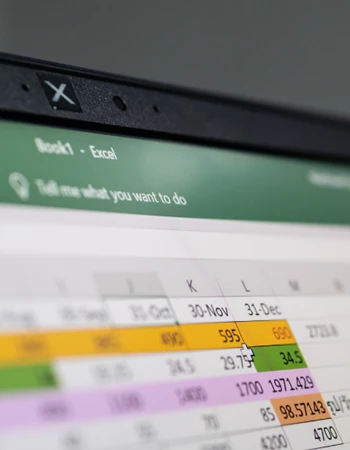
What is shop floor control?
In this guide you'll learn how shop floor control in manufacturing enhances visibility, quality control and operational efficiency, and why implementing the right system can drive your business growth.
 6 minutes
6 minutes
Written by Rod Schregardus, Access Manufacturing Expert
What Is Shop Floor Control?
Shop floor control is the system used to manage employees, materials, equipment and machinery in a production or manufacturing environment. It provides a way for manufacturers to plan, monitor and automate the everyday processes that keep the operational heart of their business running smoothly at all times.

Key Objectives of Shop Floor Control
- Real-time visibility – Shop floor control systems offer instant insights into various manufacturing processes, helping managers to monitor progress and identify bottlenecks before they impact performance. Real-time visibility of production data enables businesses to optimise resource allocation, minimise downtime and enhance operational efficiency.
- Efficient resource allocation –Managing resources effectively is crucial to sustaining high performance and reducing waste. Shop floor control software makes it easier to allocate labour, machines and materials based on priority and demand fluctuations, ensuring more balanced and streamlined workflows.
- Quality assurance – Manufacturers must ensure their products meet predefined standards by implementing rigorous quality control measures. This involves careful monitoring of production at specified checkpoints, so that businesses are better able to minimise defects, track and trace issues, and ultimately deliver high-quality end products to their customers.
- Meeting customer demands – Aligning production with customer orders and market demand is one of the best ways to cut lead times. It also helps to improve customer satisfaction by giving businesses the ability to provide more accurate delivery timescales and share regular updates on order progress whenever requested.
What Are the Components of Shop Floor Control?
Production planning and scheduling
Creating realistic and accurate production schedules is essential to the success of every manufacturing operation. With reliable shop floor control software in place, managers can gain total control over operation run times and production quantities, while simultaneously taking factors such as machine availability and workforce capacity into account.
Check out our production planning software.
Stock control management
Effective stock control management requires an accurate view of raw materials, work-in-progress items (WIPs) and finished goods. A shop floor control system provides real-time visibility of stock, which helps manufacturing teams maintain optimal stock levels and prevent shortages or overstocking.
Quality control
By integrating quality control systems, manufacturers can identify and address potential defects early in order to ensure product quality and customer satisfaction. Having the ability to track, inspect and verify items at different stages of the production cycle, and having visibility on scrap rates, are a big advantage to manufacturing teams.
Workforce management
With shop floor control systems, production staff can log on and off jobs and access relevant information such as part pictures, drawings and instructions.
Managers can monitor data such as output, time to produce and associated costs by job or employee. They can have a real time view of production without the need for timesheets.
Real-time monitoring
Gaining complete visibility over ongoing production processes allows for greater agility and quicker adjustments when things aren’t going as planned. Managers benefit by being able to track key performance indicators, machine statuses and work order progress – all in real time.
Data analytics
A robustshop floor control system unites various operational data sources in one single place. This makes it far simpler to identify trends and issues, informing strategic decisions. Reports can be shared with senior leaders and other stakeholders.
The Role of Technology in Shop Floor Control
Technology is pivotal to effective shop floor control, no matter which sub sector of manufacturing you specialise in. It is the biggest factor in enabling the automation and optimisation of core processes, and empowering teams to make data-driven decisions.
Easy access to real-time dashboards means that accurate, up-to-date information is available to managers and employees, whenever they need. Without intuitive analytical tools, it would be much more difficult to collect and analyse the vast amounts of data generated on the shop floor.
Switching from whiteboards and paper-based processes to a digital system makes it far easier to maintain a clear audit trail for compliance. Your admin burden will be reduced significantly, allowing the possibility of reallocating headcount to more value added activities.
4 Benefits of Shop Floor Control Software
- Improved efficiency – By automating many aspects of production management and control, shop floor control software reduces manual errors, minimises downtime and maximises resource utilisation.
- Enhanced quality – Embedding quality assurance processes and having real-time quality control checks and data analysis reduces waste and rework.
- Faster response times – With real-time monitoring and alerts, manufacturers can respond swiftly to issues and adjust production plans on the fly.
- Cost savings – Effective resource management and reduced waste lead to significant cost savings over time.
How to Implement a Shop Floor Control System
Taking a systematic approach to implementation is crucial to ensure the success of your shop floor control software solution. Here's a step-by-step guide:
Step #1: Needs assessment and planning
The first step is to drill down into your primary requirements and goals for implementing a shop floor control system. You’ll need to audit existing processes and workflows on the shop floor to find out what’s working well and which areas could be improved.
For instance, you may be finding it difficult to track stock levels, or struggling with product defects on a regular basis. The type of system that fits your business best depends on the scope of your challenges.
Step #2: Research providers
Clarifying your main objectives will give you a list of criteria which can then be used to compare and contrast different software providers, with the aim of finding a reputable vendor aligned with your specific needs. It’s important to evaluate features, scalability and the compatibility of any provisional software with your existing systems.
You also need to decide whether your business would be better served investing in a standalone system, or as part of a platform with broader capabilities. Shop floor control software often comes bundled with material requirements planning (MRP) systems and other types of manufacturing software. Whatever you decide, make sure your software offers seamless integration between separate processes.
Step #3: Licences & hardware
When investing in a new shop floor control system, make sure to consider the number of necessary licences based on the number of users and features required, as well as any terminals, devices or hardware components needed to support the software.
Step #4: Employee training
While some platforms are more user-friendly than others, it’s always a good idea to account for different levels of digital literacy and offer initial and ongoing training to employees and managers who will be using the new system.
Ideally, your software provider will support this and offer easy-to-follow training modules and walkthroughs designed to get staff up to speed as quickly as possible. Conducting a ‘pilot’ test in a controlled environment or with a specific production line to check performance is a good way to flag up issues and make any necessary tweaks before rolling out the system across your entire organisation.
Step #5: Monitoring and control
Following launch, manufacturers should establish a system for continuous monitoring of shop floor activities using the new system.
Regular performance reviews and audits are important to ensure your shop floor control software is meeting its objectives and is being used correctly by your workforce.
Encouraging a user feedback loop for continuous improvement will allow you to continue tailoring the system to your evolving needs over time.
Using Access Orchestrate for your Shop Floor Control
Access Orchestrate Production Planning software ensures that you are utilising every machine, employee and resource to its full capacity.
Access Orchestrate software allows production plans to be changed quickly and easily. Planners can analyse capacity, test different scenarios to answer ‘what if’ questions and identify issues before they occur.
Why choose Orchestrate?
- Saves time
- Reduces waste
- Prevents errors
- Improves communication between teams
See if Orchestrate is the right software for your business by downloading the brochure or booking a demo with our experts.





